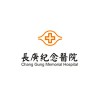
An Open Cohort of Childhood Tuberculosis in Mbarara National Referral Hospital, Uganda
TuberculosisThe aims at investigating how the diagnosis of Tuberculosis in children in a setting of high TB and HIV prevalence can be improved and to assess the treatment outcomes and tolerance of the new WHO recommended TB drug dosages.

Screening for Tuberculosis in HIV-infected Patients Eligible for Antiretroviral Treatment
HIV InfectionTuberculosisBackground: Increased access to antiretroviral therapy (ART) in Africa will require decentralization to primary health care. For this purpose, adapted methods for management of patients co-infected with tuberculosis (TB) and HIV are needed. Improved detection of TB in patients starting ART, and assessment of co-administration of ART and TB treatment are priorities in this field. Aims: To identify clinical predictors of TB in patients starting ART, and to construct screening algorithms for TB in this population; to assess ART outcomes in patients receiving TB treatment at health centre level. Work plan: The project is performed in health centres providing ART in Ethiopia. A cohort of HIV positive patients initiating ART is prospectively followed. Baseline characteristics are registered; blood samples for CD4 cells, HIV RNA and immunological markers are collected, as well as sputum for TB culture and PCR. During ART, clinical data, CD4 cell counts and HIV RNA levels are followed. Patients with TB are compared to those without TB with regard to ART outcome. Baseline factors associated with TB will be used to construct TB screening algorithms. Recruitment of the cohort was completed in March 2013; follow-up for determination of long term outcome of ART will be continued until 2016. Significance: These studies give insight into TB-HIV co-infection at primary health care level in a Sub-Saharan region, and may impact future guidelines for management of such patients.

Anti-tuberculosis (TB) Drug Levels and Hepatotoxicity
HepatitisTuberculosisThe purpose of this study is to evaluate plasma levels of hepatotoxic anti-tuberculous drugs (isoniazid, rifampicin, pyrazinamide plus significant metabolites) among patients on antituberculosis treatment (ATT) and compare the same among those who develop drug induced hepatitis on follow up versus those who do not.

Toll-like Receptor 2 Gene Polymorphism, Serum Cytokines and Susceptibility to Disease Severity or...
Pulmonary TuberculosisGenetic Variants of Host1 moreInfection with Mycobacterium tuberculosis remains at epidemic levels globally. Innate and adaptive immune responses evolve as protective mechanisms against mycobacterial infection in humans. Toll-like receptors (TLRs) are transmembrane proteins characterized by an extracellular leucine-rich domain that participates in ligand recognition and an intracellular tail. TLRs are the first defense system to detect potential pathogens, initiate immune responses and form the crucial link between innate and adaptive immune systems. Stimulation of TLR initiates a signaling cascade that involves a number of proteins, such as MyD88 and IL-1 receptor-associated kinase. This signal cascade leads to NF-κB activation, which induce the secretion of pro-inflammatory cytokines. TLR2 is a family of TLR family and has been reported to be the principle mediator of macrophage activation in response to mycobacterium. Growing amounts of data suggest that the ability of certain individuals to respond properly to TLR ligands may be impaired by single nucleotide polymorphisms (SNPs) within TLR genes, resulting in an altered susceptibility to, or course of, infectious disease. The genetic polymorphism of TLR2 (arginine to glutamine substitution at residue 753 (Arg753Gln)) has been associated with a negative influence on TLR2 function, which may, in turn, determine the innate host response to mycobacteria. In addition, another polymorphism (Arg677Trp) of the TLR2 was reported to be associated with susceptibility to tuberculosis in Tunisian patients. Moreover, in Mycobacterium leprosy patients with TLR2 mutation (Arg677Trp), production of IL-2, IL-12, IFN-gamma, and TNF-alpha by M. leprae-stimulated peripheral blood mononuclear cell were decreased compared with that in groups with wild-type TLR2. To date, there have been no studies of the association of SNPs of TLR2 with cytokine profiles and clinical outcomes on M. tuberculosis. We hypothesize that polymorphisms in the TLR2 are associated with : increased prevalence of active pulmonary TB infection, altered levels of pro-inflammatory and anti-inflammatory cytokines in serum, clinical outcomes and presentations. We thus design a prospective case-control study to test this hypothesis. The frequency of TLR2 polymorphisms in both pulmonary TB patients and healthy controls will be determined by polymerase chain reaction-restriction fragment length polymorphism. Serial serum levels of IL-12, IFN-γ, and IL-10 in pulmonary TB patients with or without TLR2 polymorphisms will be measured by enzyme linked immunosorbent assay. Relationships between TLR2 polymorphisms and serum cytokines dynamics or clinical outcomes will be analyzed.

Tuberculosis Immunity in Children
TuberculosisThe purpose of this study is to gain a better understanding of how immunity to tuberculosis (TB) is maintained in children. When children get tuberculosis, it is more likely to spread to other parts of the body than when adults get it. This study will compare the blood cells that fight TB in children to the blood cells that fight TB in adults. Children enrolled in this study will have blood drawn on 1 or 2 occasions. Adult participants will be leukapheresed, a process in which blood passes through a machine collecting specific blood cells and returning the remaining blood to the body. An estimated 260 subjects will be enrolled in this study.

Development of a Diagnostic Prediction Score for Tuberculosis in Hospitalized Children With Severe...
TuberculosisSevere Acute MalnutritionTB-Speed SAM is a multicentric, prospective diagnostic cohort study conducted in three countries with high and very high TB incidence (Sierra Leone, Uganda, and Zambia). It aims at assessing several diagnostic tests that could result in the development of a score and algorithm for TB treatment decision in hospitalised children with severe acute malnutrition (SAM).

Immune Response to BCG Vaccination in Neonates Born to HIV and LTBI Infected and Non-infected Mothers...
HIV InfectionsNeonatal Infection2 moreMaternal infections affect the basal immune status of neonates. One of the possible mechanism is the fetomaternal microchimerism, in which some cells and active substances are exchanged bi-directionally between maternal and fetal circulation through placenta. Even in the absence of a direct (vertical) transmission of pathogens to fetuses, certain infections make the neonates more prone to allergies and some adverse events of early vaccinations. We postulate that the basal immune status of neonates born to HIV and LTBI infected mothers is primed by gestational exposure to immunological active molecules, which could results in an altered response to early BCG vaccination. Transcripts expression identified by RNA sequencing are compared between sets of mother-child and their respective umbilical cord blood, and between groups of infected and non-infected pairs.

MRI Differentiating Gut TB and Crohn's
Crohn DiseaseIntestinal TuberculosisIt is clinically challenging to differentiate Crohn's disease from gut tuberculosis especially in regions endemic of tuberculosis infection. The investigators plan to perform magnetic resonance enterography (MRE) who presented to our hospital in Shenzhen, China for new onset of lower gastrointestinal symptoms and ileocecal mucosal lesions of uncertain diagnosis as evidenced by the presence of inflammation, ulceration, strictures or nodules on colonoscopy. MRE findings will be independently interpreted by two radiologistsThe role of MRE in distinguishing gut tuberculosis from Crohn's disease will be determined.

Qualitative Understanding of Community TB Services Pre and Post the CHIP-TB Trial
Tuberculosis InfectionTuberculosis PreventionThis qualitative study is designed to elicit the perspectives of relevant stakeholders to adapt a community-based TB/HIV intervention aimed on providing home-based TB prevention treatment (TPT) initiation for child TB contacts, to design its implementation strategy and, post intervention, to assess lessons learned for future scale up. Participants will include policy makers and health system managers, nurse and physician providers, community health team members, and child caregivers of TB-exposed children. Stakeholders will be asked to participate in two interviews, one prior to the cluster randomized trial assessing this intervention and one after the cluster randomized trial. Trained interviewers will conduct 1-hour semi-structured in-depth interviews that will be audio-recorded, translated and transcribed for thematic analysis using a priori and emergent domains of interest. Free-listing, ranking exercises and cultural consensus will be used to identify context-specific intervention adaptations and implementation strategies.

Implementation of an Integrated Care Strategy for Children Contacts of Patients With Tuberculosis...
Latent TuberculosisIntroduction: childhood tuberculosis continues to be a major public health problem, despite the fact that the visibility of the epidemic in this population group has increased, studies are still lacking that can resolve the gaps that persist. Objective: To design, implement and evaluate an integrated care strategy for children under five years old household contacts of patients with smear positive pulmonary tuberculosis in Medellín and the Metropolitan Area. Methodology: quasi-experimental study, in which around 300 children household contacts of patients with smear positive pulmonary tuberculosis from Medellín and the Metropolitan Area will be evaluated, who will be recruited in a period of one year. A subgroup of these children, estimated at 85, who require treatment for latent tuberculosis, will be offered to receive treatment for latent tuberculosis under a integrated care strategy that includes some modifications to the currently standardized scheme in Colombia, with rifampicin treatment daily oral route for four months, follow-up under the project scheme with the availability of a nurse, general practitioner, specialists, care by professionals from other disciplines such as social work, psychology, and nutritionist, and the provision of incentives (transport and food assistance). This strategy will be compared with isoniazid treatment according to the standardized scheme in the country, which was received by a cohort of children between 2015 and 2018. The study has the CIB Research Ethics Committee approval. Expected results: this project is expected to contribute with greater local evidence of integrated care strategies that allow greater compliance with treatment for latent tuberculosis in children, so that there is a real impact in the control of childhood tuberculosis and in the reduction of tuberculosis reservoirs in order to achieve the goals proposed by the World Health Organization's End TB Strategy.
